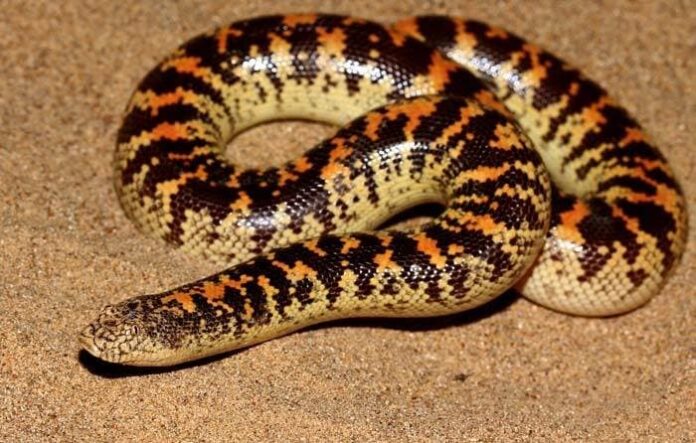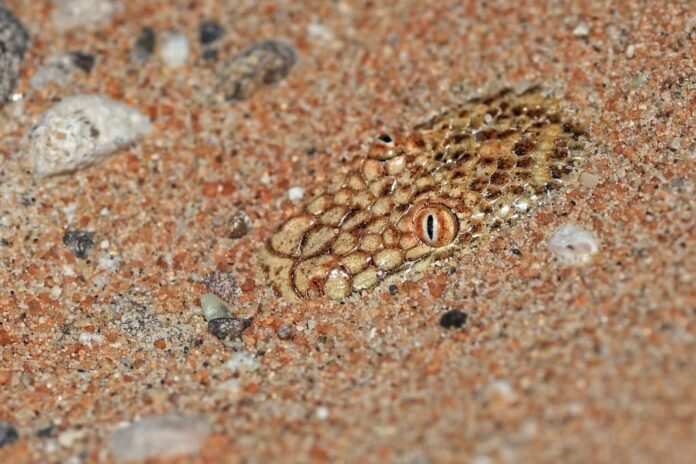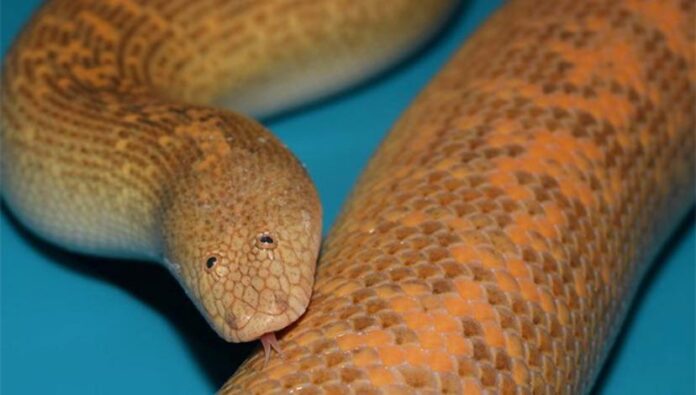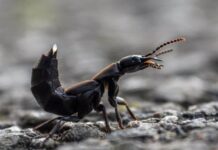The Arabian sand boa looks like it comes straight out of a child’s drawing, and it is all from the eyes. While the name sounds quite intimidating, how it looks says otherwise. Since the appearance of this little snake already got your attention, let’s learn a bit more about it. Perhaps, you might want to have one as a pet, who knows?
1Appearance

The Arabian sand boa is a small and slender snake that grows to a maximum length of around 38 centimeters. This length is small for a boa, and this species is actually the smallest boa constrictor. It has a blunt and wedge-shaped snout, and it is sandy-brown or yellowish-gray in color and speckled with white flecks. Its length and overall appearance are not so different from many snakes out there. However, there is one thing that stands out the most, its mesmerizing eyes. The eyes of an Arabian sand boa are very small, and they are located right on the top of its head. This strange location of the eyes simply makes the snake look goofy; hence the nickname derp snake.
2Behavior

Not different from other boas, this one is also solitary and they only come together to mate. Funny appearance aside, the Arabian sand boa is one of the three boa species that lay eggs instead of giving birth to live young. Female Arabian sand boas lay their eggs in small clutches of 7 eggs that take around 66 days to hatch. More than that, the hatchlings don’t really break out of the shells by themselves. The mother helps her babies open their shells and break out from the eggs. These sand boas are harmless, and they only mind their own business with zero interest in attacking people. Simply put, it is neither dangerous nor venomous.
3Feeding & Habitats

This species is endemic to the Arabian Peninsula and Iran where sand is abundant for it to reside. As a desert snake, it likes to live in semi-underground areas with sand or soft soil where it can bury itself. All Arabian sand boas can tolerate a wide range of temperatures, anywhere from 20 to 50 degrees. During the day, it buries itself deep in the sand and it moves towards the surface at dusk. This is where the location of the eyes is useful for its hunting in the desert. When it moves to the surface, it can just project its eyes to observe the situation. If prey comes around, this ambush predator will pounce on the food with a sideway flick of its head. Speaking of prey, its common meals are Baluch rock geckos, short-fingered geckos, and worm lizards as well as arthropods and small rodents.
Related Post: Fastest Land Snakes In The World




